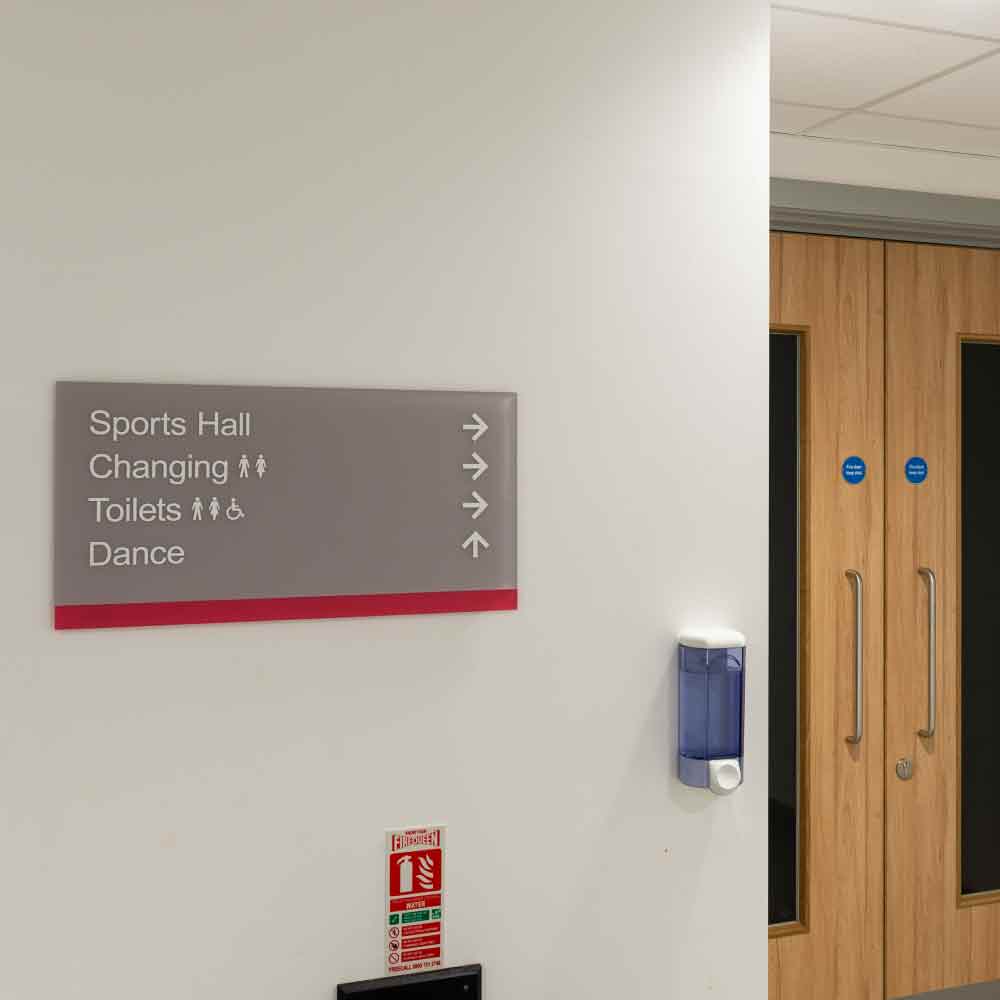Primary schools play a monumental part in children’s development, both socially and cognitively. Strategic wayfinding signage improves the user experience of any environment, as it makes navigation easier, and more pleasant. In this guide, we explain what wayfinding is, who the users are, and how integral formal, informal, and inclusive signage is in primary schools.
What is wayfinding strategy for primary schools?
Wayfinding strategy is the planning, design, and implementation of signage in any environment. The principles behind creating an effective wayfinding strategy are, that signs must be:
- Simple and concise
- Sensibly located
- Accessible for all
- Relevant and appropriate
It’s important to ensure that only the most essential information is visible, without mistakes, and without overcrowding the sign with excessive information.
Wayfinding signage strategies use careful mapping and planning to design navigation, information, and identification signs that all users of a space can easily use. The scale of the wayfinding strategy will depend on the complexity and size of the primary school and should be regularly tested for effectiveness before launch.
Who uses primary school wayfinding signage?
Predominantly the audience of primary school wayfinding signage are the staff and pupils, however visitors should also be considered. Students are usually aged between 4 and 11 years old and the levels of understanding signs vary widely, not just between the oldest and youngest classes, but also within each class. This means that a wayfinding strategy for primary schools needs to cater towards the different levels of reading ability and grasp of contextual images, as well as internal navigational skills.
Adults who work in primary schools also need signage for wayfinding but their ability to find their way around using their own previous experience, internal navigation, and context clues, means they are classed as a different audience. Teachers, staff, and visitors will require a strategy aimed toward their user experience, that is distinct from the pupil’s experience.
Formal signs for primary schools
There are a range of signs needed to complete a wayfinding strategy in a primary school, some more formal than others. This is especially true of external signage, as navigation and information signs to the entrance and car park areas are usually post and panel signs, aimed at adults.
Internally, there may be some formal signs for rooms and facilities that aren’t directly for the students use, such as offices or adults only facilities. Whilst more traditional looking, they serve a purpose for the adults who need them and are appropriate for that audience.


Informal signage for learning in primary schools
The majority of signs in a primary school should be designed to make it easy for children to identify and interpret the meaning. Informal designs that incorporate colours and images aid their understanding and that in turn supports them in developing their own sense of direction.
Casual signs that can be easily understood by children helps to foster confidence and independence, as well as building a unique educational environment for them. Formal or traditional looking signs that are clearly aimed at adults, can easily be ignored by kids whereas relaxed design schemes are eye-catching and attractive.
Integrating inclusive signage in primary schools
Whether they are formal or fun looking, all signs in a primary school should be inclusive and accessible. There are a variety of sign formats xsign have developed to provide more wayfinding options to students, staff, and visitors.
To assist users with visual impairments, Talky signs deliver audio messages to give directions or information to anyone who presses it. These messages can be pre-recorded and updated with ease. Our braille and tactile signs are accurately 3D printed and all our signs conform to the UK Equality Act 2010, building regulations and ADA standards.
Encouraging fun with primary school signage
Using signs to foster a sense of fun alongside learning, takes informal signage up a notch to become entertaining, and educational. Signs can be designed to encourage fun and learning inside and outside the classroom, including corridors, playgrounds, and canteens. For example, floor graphics for counting numbers as they walk between lessons, the names of vegetables and fruit in the cafeteria, rules of playground games on external walls; the possibilities are endless when it comes to creating fun visual ways to engage and educate pupils.
The best wayfinding signage strategy for primary schools must plan for the unique audiences who use the space, as well as the scope of understanding and needs each segment has. At xsign we have a great deal of experience designing and producing signs for primary schools, read our school signage case studies or get in touch with us for further guidance.


